Your dogs are having a heated “discussion” with the squirrels in the oak tree, the same as always. You’re used to this afternoon ritual. You barely register the noise anymore. Until there’s a loud knock on the door: an irate neighbor who doesn’t find your dogs’ vocal repertoire adorable. This isn’t his first visit, and with a threat of a call to the police hanging over your head, you start to wonder if it’s time to consider bark collars.
Barking Dogs
Dogs bark. Whether you like the sound or not, barking is how dogs communicate. They bark to “speak” with us and each other, and every bark is different.
- Alarm: Guard dogs, in particular, bark to alert you. Whether it’s a visitor at the door or an intruder in the yard, they feel you need a warning.
- Defense: Dogs have their territories, and barking establishes the boundaries. Maybe it’s just a squirrel or the mailman, but they’re warning the invader to stay out.
- “The Twilight Bark”: Remember 101 Dalmatians? Your dog shares information with other dogs in the neighborhood.
- Attention: Attentive breeds, such as Dachshunds act out, just like children. If you’re not providing sufficient attention, they’ll bark to redirect your notice on them. Don’t reward this behavior unless you want to encourage the barking.
- OCD: Sounds strange, but some dogs develop compulsive behaviors. They often come from abusive situations, and you need to seek professional evaluation. Bark collars will make their situation WORSE.
Training Dogs with Bark Collars
Before you reach for a bark collar (angry neighbor notwithstanding), you need to get to the root of your dog’s barking habit. If your dog has a medical condition or emotional reason, a bark collar won’t solve the problem. On the contrary, you COULD make things worse.
When correcting nuisance barking habits, you need to combine a bark collar with a positive training program.
NEVER use a bark collar alone.
How Bark Collars Work
Bark collars administer an unpleasant stimulus whenever your dog barks. Sensors detect the vibration and tone of the bark. Whines and howls have different pitches, so collars don’t react. (If you want to end your Beagle’s howling serenades, you’re out of luck)
When used properly, with a positive training program, bark collars can be safe and effective. However, if misused, you can cause your dog a lot of unnecessary stress.
According to Dr. Katherine Houpt, a Cornell University’s College of Veterinary Medicine professor, bark collars should ONLY get employed when your dog is misbehaving (i.e., barking inappropriately).
“Basically, the dog needs to understand why they are being punished.”
~Katherine Houpt, VMD
Bark collars come in five different varieties, based on the noxious stimulus they provide:
- Spray
- Ultrasonic sound
- Vibration
- Electric shock
- Multiple settings
Choosing a Bark Collar
If you have a positive training program in place, and you’ve promised your neighbor you’re taking steps to curb your dog’s bad habit, it’s time to look into a bark collar. But, before you hit the internet, there are a few things to keep in mind.
- Neck Size: Verify the size your chosen collar fits. If the bark collar is too large, it won’t function. Too small, and you’ll hurt your dog.
- Weight: Bark collars all carry some kind of bulk. For small dogs, don’t go any higher than 5 ounces. Medium dogs tolerate up to 15 ounces.
- Comfort: Yes, you’re correcting a bad behavior, but your dog shouldn’t end up miserable. Bark collars are meant for limited periods – NOT extended wear.
Best Bark Collars
There are five varieties of bark collars available. Now that you know the root of your dog’s barking consider which variety suits that behavior best. Look at your capabilities, as well. Your part in the training process is just as important. Remember, you and your dog are in this together.
Best Spray Bark Collars
Spray bark collars function by releasing an unpleasant, plant-based scent around your dog’s nose. That spray is usually citronella. We don’t mind the smell, but dogs (and most insects) aren’t impressed. The downside to using spray collars with frequent barkers is your dog CAN develop a tolerance to the smell over time (another reason NOT to leave the collar on long-term)
The Downtown’s collar features a microphone to detect barks before spraying citronella. A single battery powers both the microphone and sprayer. There’s no need to worry about recharging, and it lasts longer than electric collars. Each cartridge holds 15 sprays, and you get two in the package. The collar itself is adjustable, allowing sizing for all dogs.
Downsides? Your dog needs to weigh at least 8 pounds. Also, there were some reports of the collar activating with sneezes, whines, and yawns, so the microphone is a TINY bit sensitive.
The Good
- Adjustable collar for easy sizing
- Single battery for power
- Every cartridge holds 15 sprays
The Bad
- Dog must weight at least 8 pounds
- Microphone is VERY sensitive
Uncomfortable with even citronella? PetSafe has an option for you. Their bark detection technology filters outside noise from your dog’s barking, ensuring proper behavior correction. You can choose from citronella or unscented cartridges (dogs don’t like getting sprayed, in general). Each cartridge holds 30-40 sprays, and the refill cans are good for 300-400 sprays. The collar is adjustable up to 22 inches. Best of all, the entire design’s 100% waterproof, letting your dog enjoy normal outdoor activities.
The downsides? The weight range is 8-55 pounds. And, again, reports of overly sensitive triggering (movement, yawning) came in. However, some owners claimed loosening the collar a little corrected the problem.
The Good
- Citronella OR unscented cartridges
- Waterproof
- Cartridge holds 30-40 sprays
The Bad
- Dog must weigh 8-55 pounds
- Some microphone sensitivity
Best Ultrasonic Bark Collar
Dogs’ hearing is more sensitive than ours. As a result, they pick up frequencies and pitches we can’t. Ultrasonic bark collars function on this principle, producing high-pitched sounds only the dog can hear. Needless to say, if your dog has any hearing deficiencies, this option won’t work.
MODUS provides the option of a free-standing or portable device, giving you the freedom to correct your dog’s behavior on walks. When activated, the receiver emits an ultra-high frequency sound you won’t hear, but your dog will HATE. The range is just under 20 feet. In addition, MODUS gives you an outstanding two-year warranty – something you won’t find elsewhere.
Downsides? The range is limited, so you need to be pretty close to home for proper use. Also, if you have a stubborn dog bent on barking, odds are they’ll ignore the sound and continue.
The Good
- Portable OR Free-standing
- Two-year warranty
The Bad
- Only has a 20-foot radius
- Stubborn dogs may ignore the high-frequency sound
Best Vibration Bark Collars
Vibration bark collars generate just that: varying intensities of vibration along your dog’s neck. The sensation is annoying (would you enjoy something twitching against your neck?), and your dog learns the irritation follows the bark. The best vibration collars change intensity with the failure to stop barking.
POP View provides the perfect option for active dogs: a vibration collar with adjustable sizing and complete waterproofing. The high quality and durability win praises from owners across the board. Even though there’s only one vibration setting, people felt the collar eliminated their dog’s barking.
Downside? It’s expensive. If you want to curb your dog’s nuisance barking, you need to decide if it’s worth the cost.
The Good
- Waterproof
- High-durability
- Adjustable sizing
The Bad
- Expensive
- Only has one vibrational setting
Would you prefer having some variability in vibration correction? NPS has you covered. Not only does NPS provide a warning beep, but it also has a full SEVEN levels of vibration to guide your dog away from their barking behavior. The lightweight design suits dogs between 6-120 pounds in weight, with full adjustability. In addition, the Smart Chip microprocessor filters outside noise, ensuring your dog won’t receive correction for neighborhood dogs’ barking.
The downside? Unhappily, people didn’t like the durability of this collar.
The Good
- Warning beep and SEVEN correction levels
- Fits weights of 6-120 pounds
- Smart Chip fiters outside noises
The Bad
- Poor durability
DogRook offers another option with warning beeps preceding vibrations. The adjustable collar fits all sizes, up to 110 pounds. Operating on batteries, there’s no need to worry about recharging the collar. The sensitive microphone is tuned to your dog’s barking, keeping their training on track.
So what are the downsides? People struggled with the fit on smaller dogs. Some people also felt the collar was slow to correct their dog’s barking.
The Good
- Adjustable sizing
- Battery-operated
The Bad
- May not work for smaller dogs
- Sometimes slow on correction
Best Shock Bark Collars
Shock collars perform as they sound: they administer a static shock through electrodes on the collar. Most collars provide different settings and intensities. Please note, Dr. Houpt advises AGAINST shock collars for adjusting barking behaviors. Shock collars have their uses, but there are better options for correcting nuisance barking.
SportDOG features Silent Partner technology: the sensor filters potential false triggers, so your dog doesn’t receive punishment for other environmental sounds. There are three settings available. If your dog barks more than 15 times in 50 seconds, the built-in safety feature kicks in, and the collar shuts off.
Downsides? The collar IS expensive. Dogs smaller than 8 pounds can’t use the collar. The battery is rechargeable, but it takes a full 4 hours, which people felt was excessive. The collar’s design irritates your dog’s neck, and you DO need to reposition the collar every few hours to keep your dog comfortable.
The Good
- Silent Partner technology filters false triggers
- Built-in safety shut-off
The Bad
- Dog must weigh at least 8 pounds
- Rechargeable battery takes 4 hours to charge
- Collar irritates your dog's neck
If you want more range for your shock collar, AHJDL has you covered. Their collar provides two training modes, a no-shock mode, and seven levels of intensity. In addition, you get a digital display to see your setting easily. The entire collar is waterproof, and it’s available in four colors. The identification chip in the sensor filters out background noise to reduce false activations. The rechargeable battery lasts 15 days, and it only takes 2-3 hours to recharge.
The downside? People struggled with the instructions included with the collar. If you’re used to shock collars, you might do okay. Otherwise, prepare to call customer service.
The Good
- Training mode, no-shock mode, and seven levels
- Identification chip filters environmental noise
- Rechargeable battery lasts 15 days and charges quickly
The Bad
- Instructions diffficult to follow
Best Multiple Setting Bark Collars
Single-option collars have a fatal flaw: dogs get wise to the stimuli. So if you have an intelligent (or stubborn) dog, you may find the collar failing. Your best bet is to turn to a collar with multiple settings. You can customize the stimulus-response and setting, keeping your dog on their toes.
TBI Pro provides three levels of correction: sound, vibration, and shock. Within those options, you have five adjustment levels. The digital display makes it easy to see the settings. The sensor filters out ambient noise to eliminate possible punishment for other dogs’ barking. While your dog shouldn’t take the collar for a swim, it’s waterproof enough to handle splashing and rain. A built-in safety deactivates the collar after seven corrections (any mode) in one minute. The long-lasting battery lasts approximately two weeks (depending on your settings).
Downsides? It’s expensive – all of those features don’t come cheap. Some people also found the device difficult to figure out (i.e., not a great choice for beginners).
The Good
- Easy-to-read digital display
- Waterproof
- Built-in safety shut-off
The Bad
- Expensive
- Instructions difficult to follow
Want a more hands-on option? Pet Union provides a remote control for you to operate. Utilizing sound, vibration, and shock modes, the collar has four levels of intensity. You make adjustments with your hand-held remote. In addition, the collar’s completely waterproof, allowing plenty of outdoor activity.
The downsides? This collar is ONLY meant for training sessions and should NOT get used long-term – your dog will grow uncomfortable. People also reported that even the lowest shock setting was too much for some dogs.
The Good
- Hand-held remote
- Waterproof
The Bad
- Designed for training ONLY - cannot be left on
- Even lowest shock too much for some dogs
Are you concerned about undue punishment with your dog’s bark collar? Authen considered that. Their patented design holds on activation until a second bark, triggering a warning on the first bark. After that, the intelligent sensor ignores outside noise and movement, zeroing in on your dog’s barking. You have the options of sound, vibration, or shock, with five adjustable levels. The waterproof digital display makes it easy to view your current settings. The rechargeable battery lasts around 12 days, recharging in just 1-2 hours.
Downside? Due to the safety feature, the collar tends to miss low-level barks.
The Good
- Doesn't trigger until second bark
- Waterproof, digital display
- Rechargeable battery lasts 12 days and charges FAST
The Bad
- May miss low-level barks
Have more than one nuisance barker in the household? Dog Care provides the solution. Their remote control connects up to NINE dog collars! You have the options of sound, vibration, and shock, with up to 99 levels of intensity. The adjustable size works for dogs between 15-100 pounds. The collar is waterproof, and the remote control’s display is easy to read.
So what’s the downside? This is another training tool – you have to be on-hand to use this collar. So while you can’t leave the collar on your dog while you’re away, it’s great for when you’re there to watch your dog and observe their improper barking behavior.
The Good
- Can connect up to NINE collars
- Up to 99 levels of correction
- Waterproof remote control
The Bad
- Dogs must weigh between 12-100 pounds
- Only works as a training tool - can't stay on
Breaking the Barking
Dogs bark. When your dog’s bark crosses over the line into nuisance barking, it’s time to look for a solution. Finding the reason for the barking is the first step. Once you have that answer, you can start developing a positive training program to help correct the behavior.
Reaching for a bark collar without a training program is never a good idea. You’ll upset your dog and potentially make the problem worse. If you’re uncertain about how to proceed, get in touch with a professional trainer. They’ll get you started on the road to success.


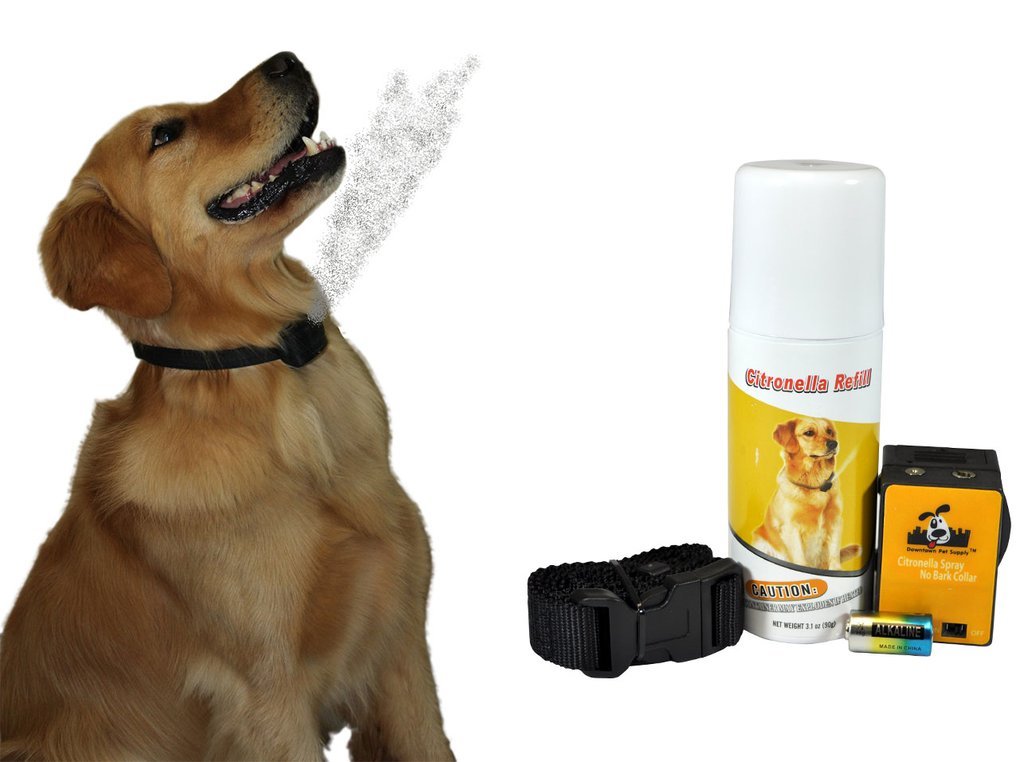
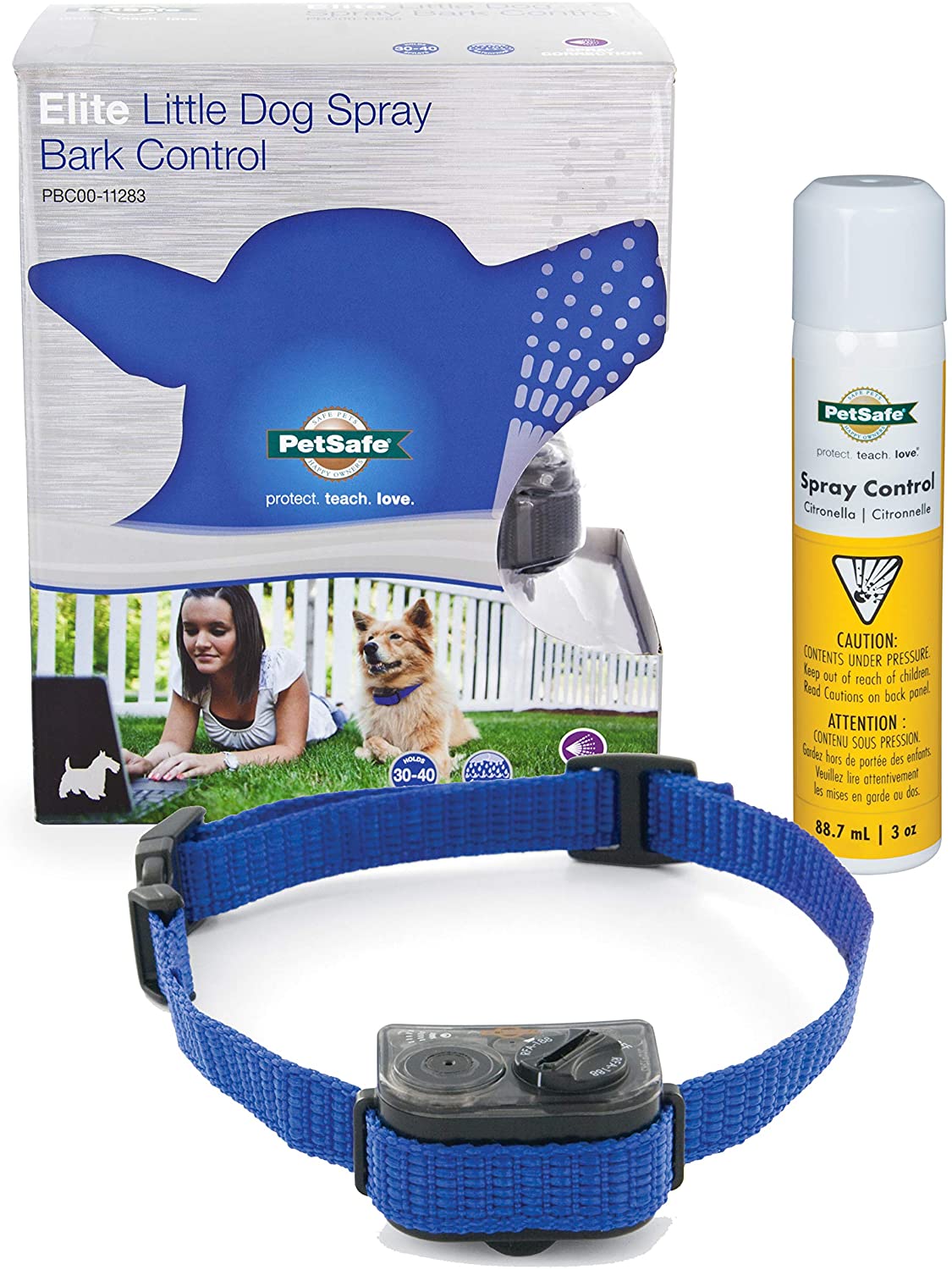
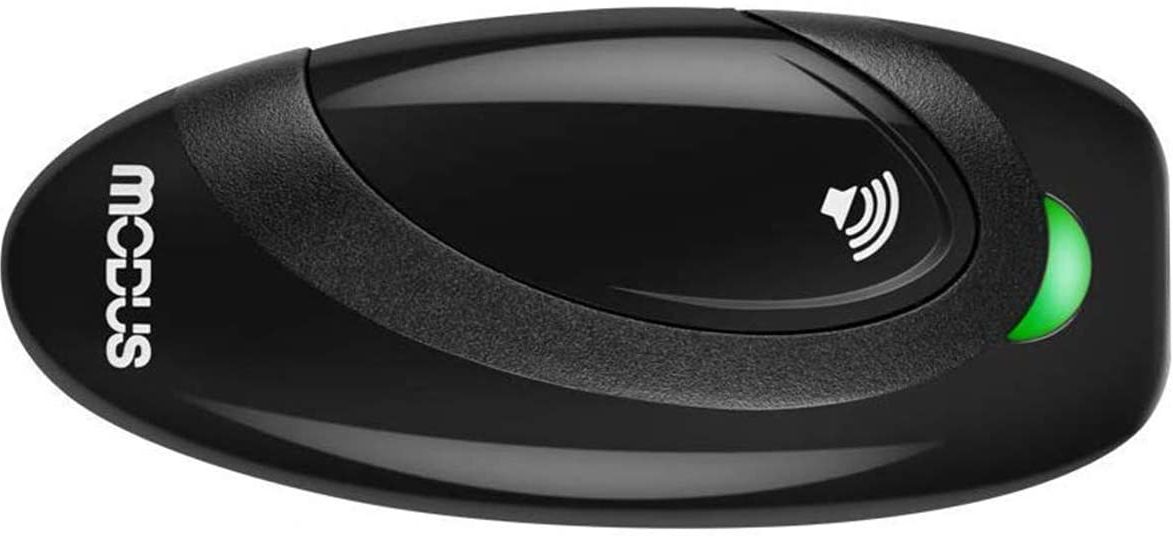
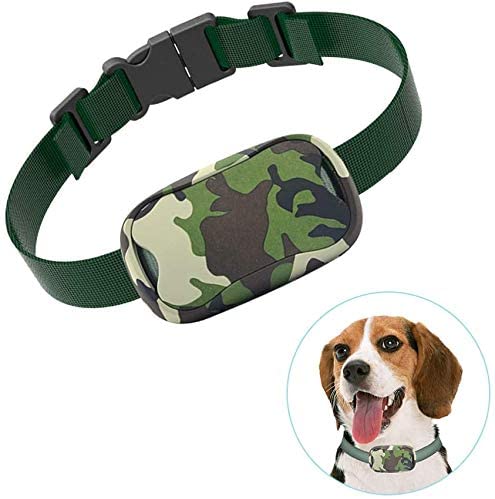
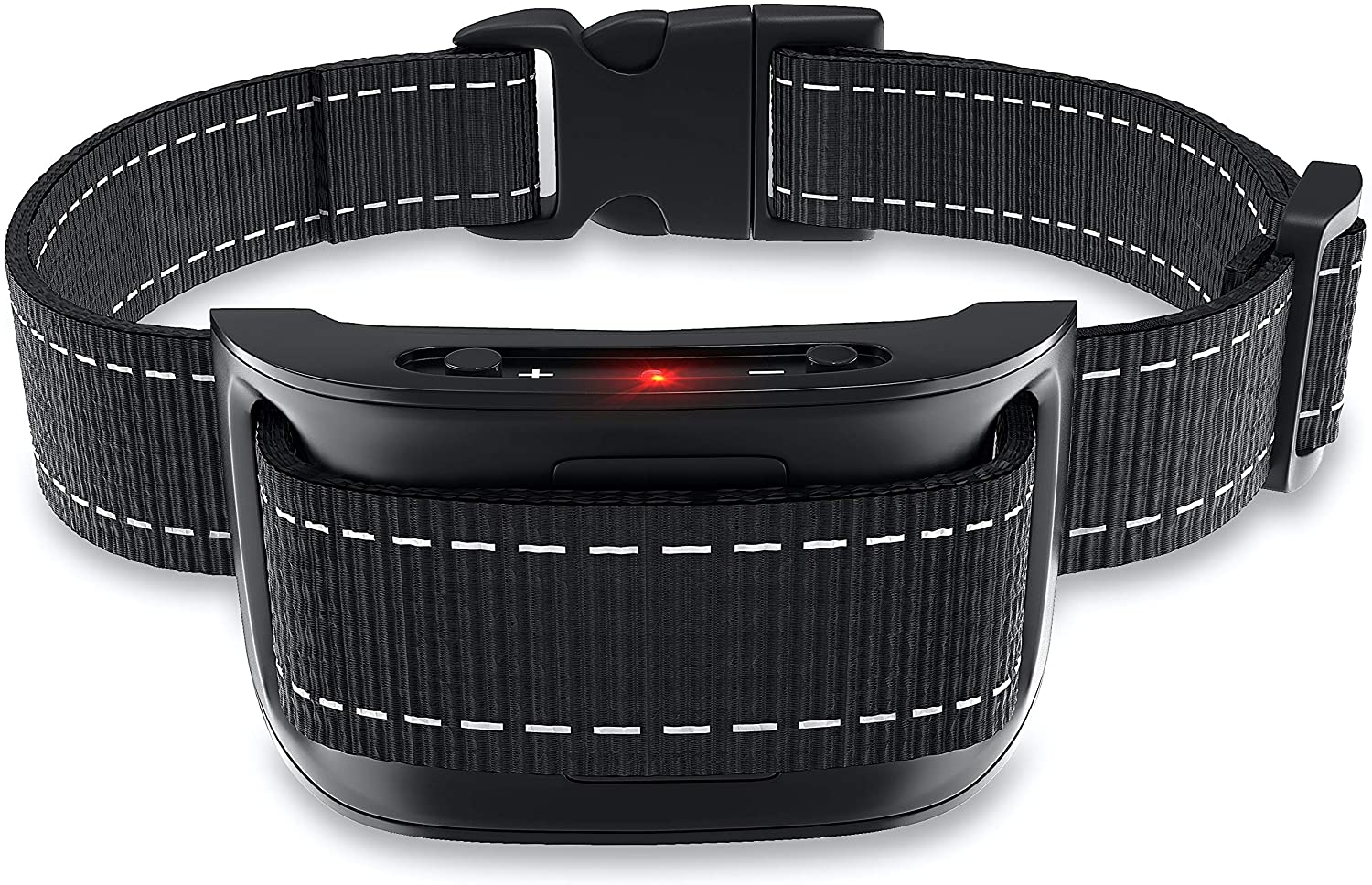
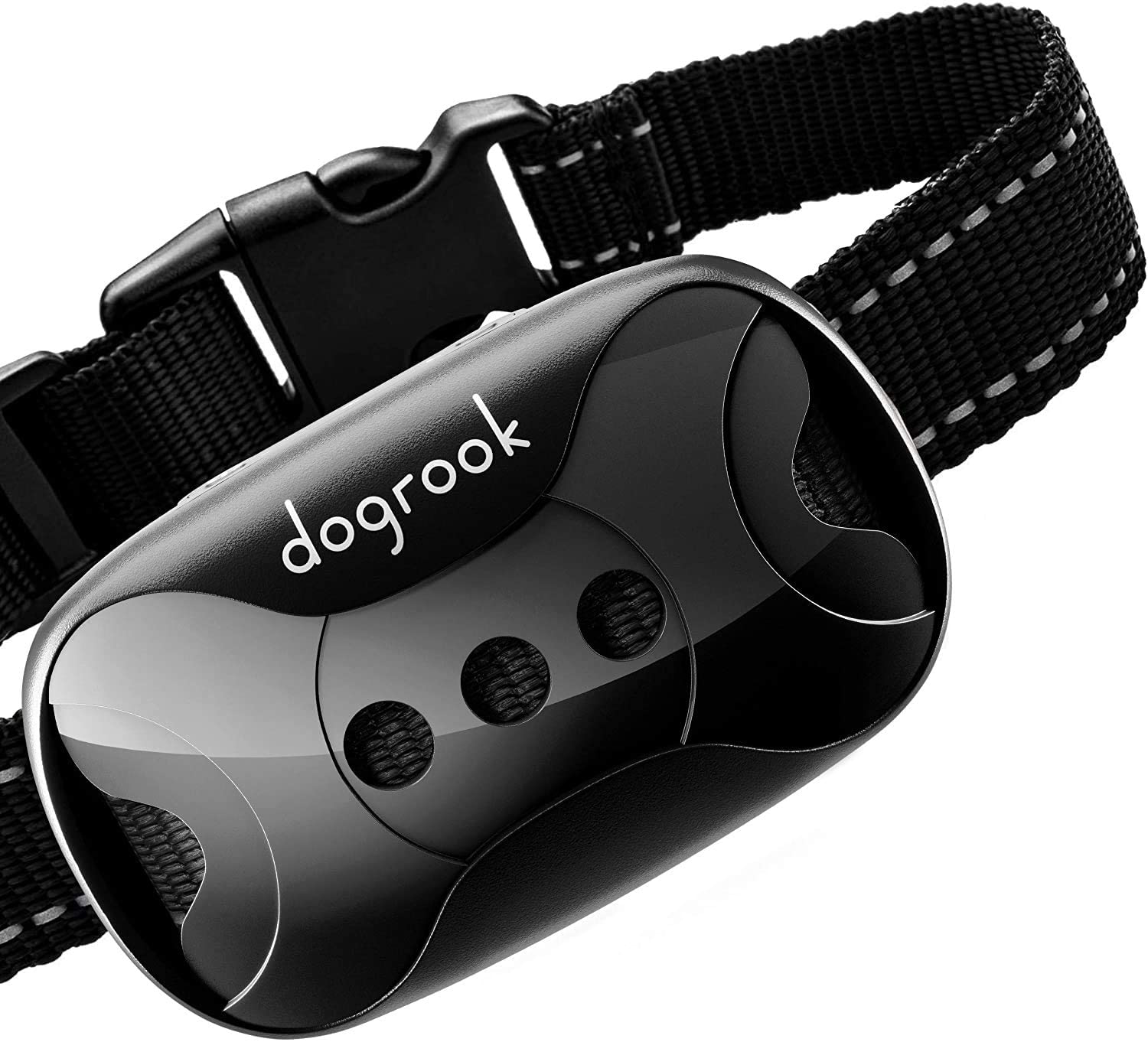
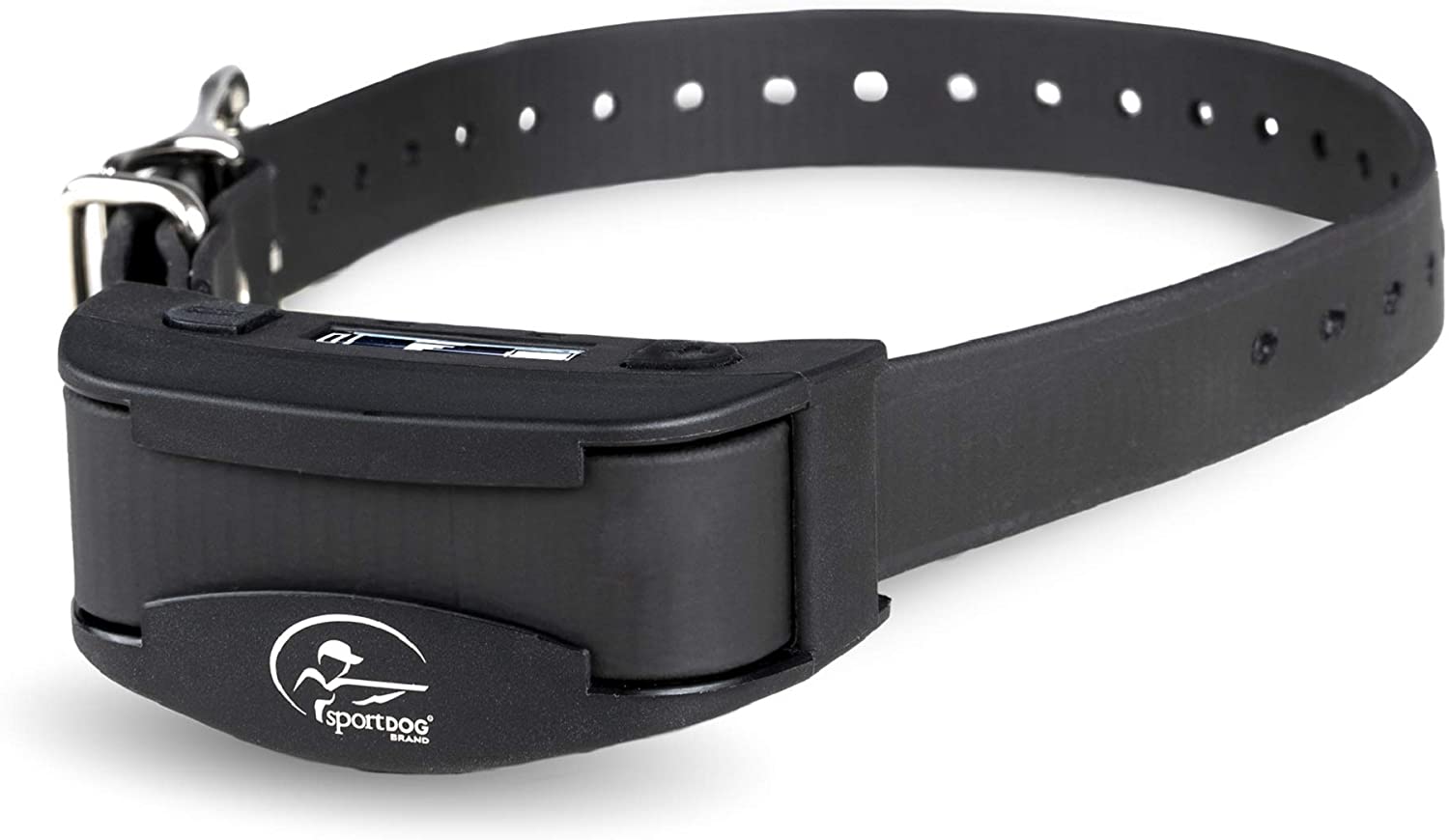
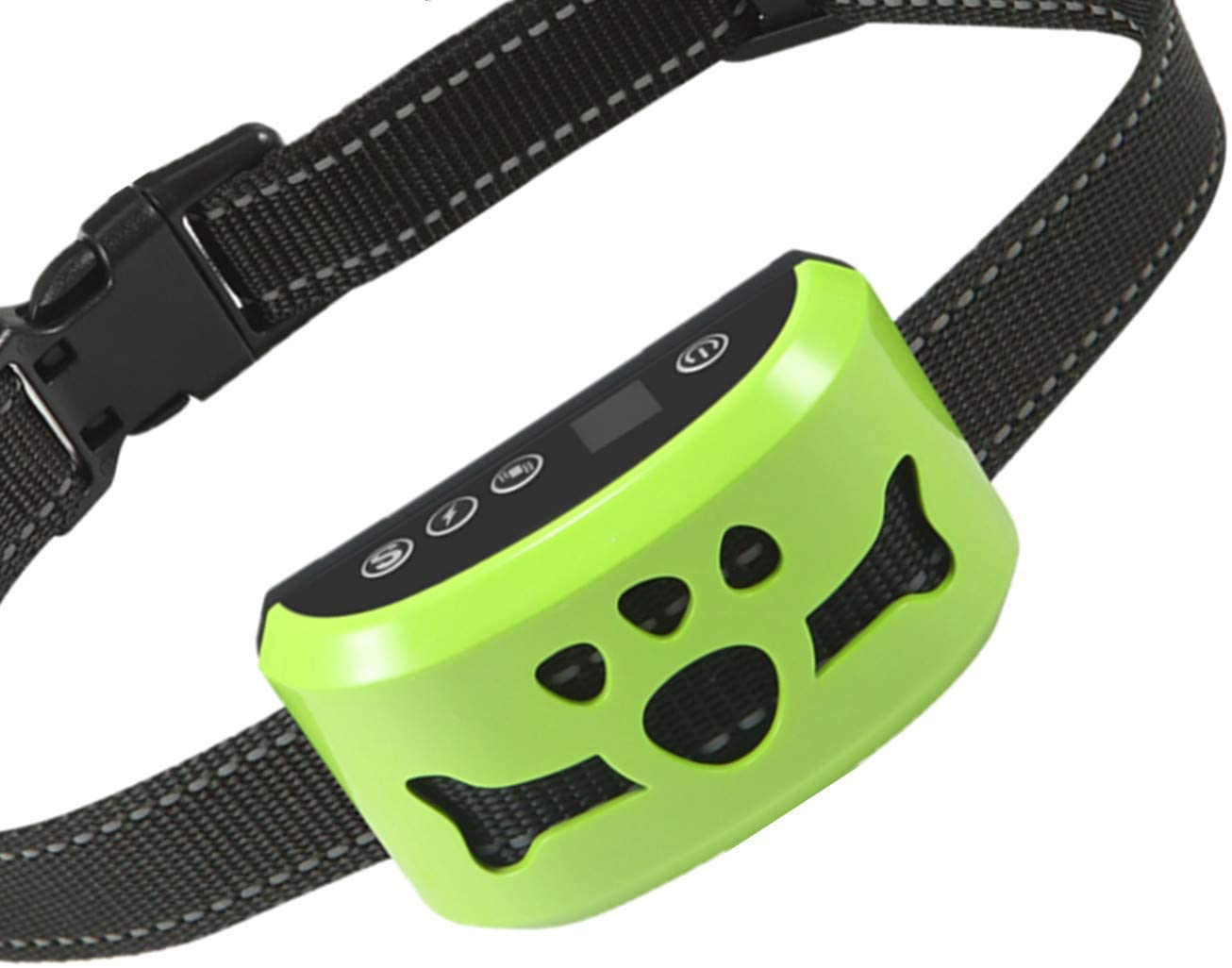
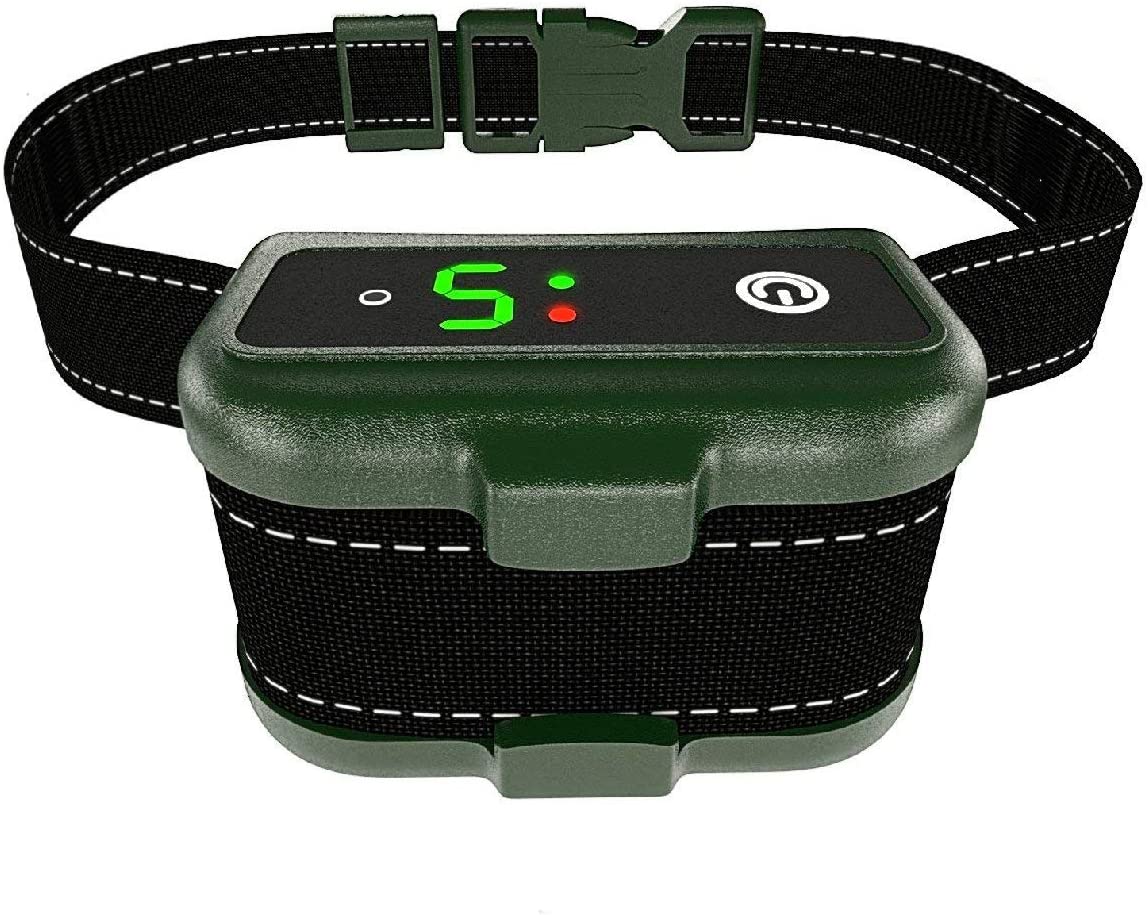
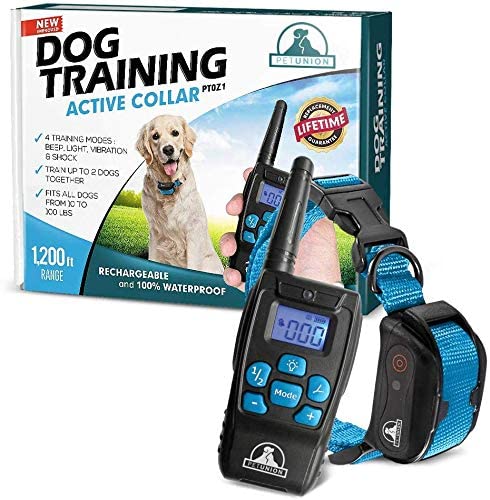
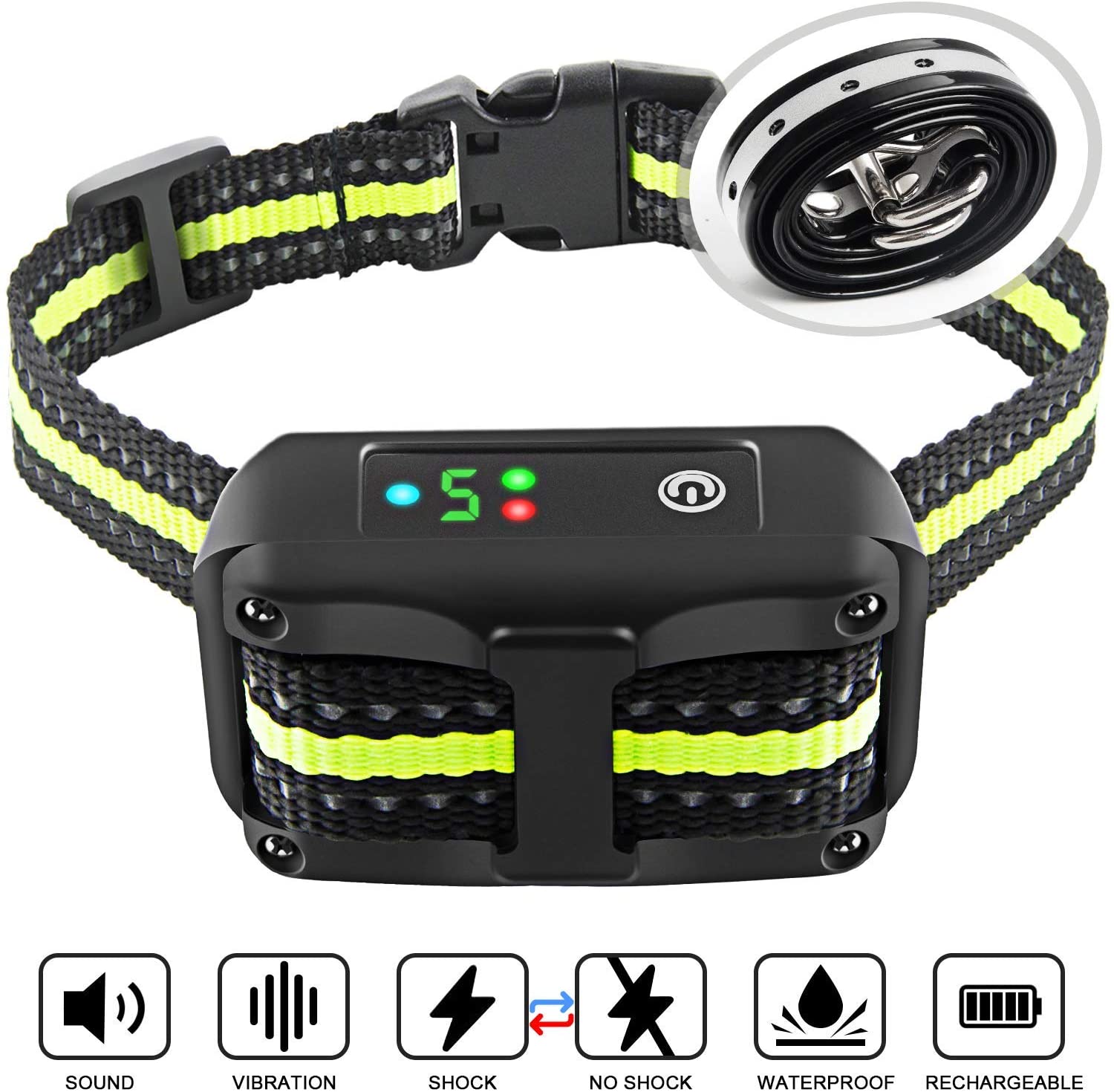
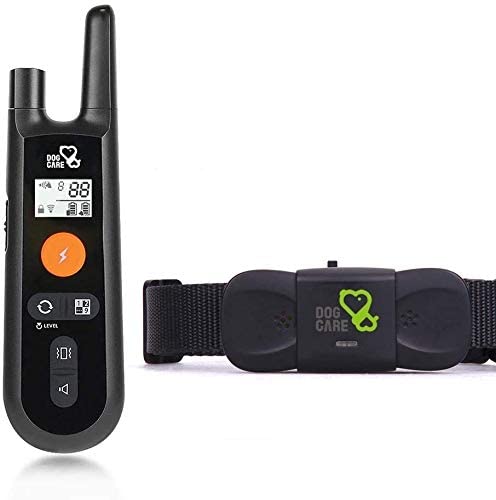




No comment yet, add your voice below!